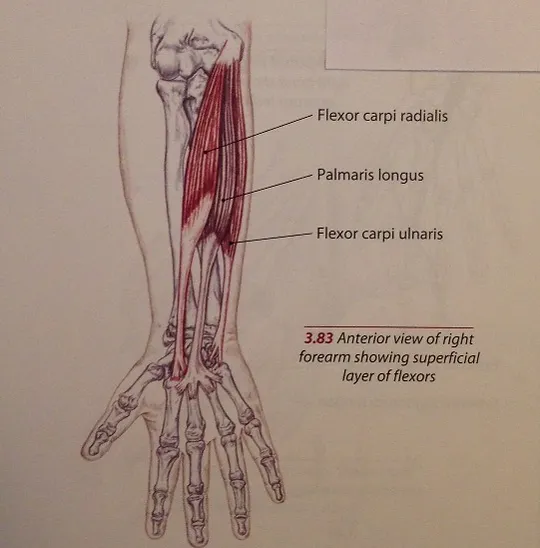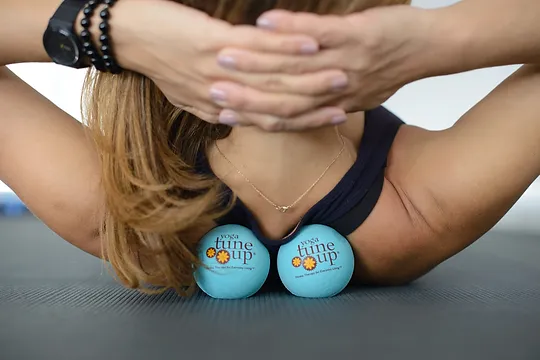Wrist and Forearm Pain in Downward Facing Dog
Have you started practicing yoga with the intention of feeling better, less stressed, and more relaxed but instead notice that your wrists are starting to hurt? If you're taking Ashtanga, Vinyasa, or Flow classes you've likely practiced a series of poses - planks, chaturangas, up dogs and back to downward facing dog. The more you attend classes and create a consistent practice, you’ll find (over time) that you've become accustomed to poses (Asana - in Sanskrit) and the transitions between them & your movements will likely become a more fluid one. You may experience considerable sensations throughout your body as you navigate one pose and then the next.
However, what happens if you begin to encounter sensations in your body, which feel less than ideal? Put more frankly, you hurt. A common question I get is, “Why do my wrists and forearms hurt in a plank & downward facing dog?”
Before answering this question, let's talk a little bit about your soft tissue anatomy. There are four extensors of the wrist and fingers. Located on the top (or posterior side) of your forearm, they are the:
- Extensor Carpi Radialis Longus
- Extensor Carpi Radials Brevis
- Extensor Carpi Ulnaris and
- Extensor Digitorum.
Do you need to know or memorize these, absolutely not but anatomy-focused teachers may want to learn these muscle names.

Now do this: Stand and lift one arm so it’s parallel with the ground, then draw the top of your hand back so your palm faces forward and your fingers lift toward the ceiling
Think…. “Stop! In the name of love!!” Ahhh, haha I digress…
When these muscle fibers shorten (aka concentrically contract) they cause your wrist to move into a position that's called extension.
Alternatively, on the bottom (anterior side) of the forearm are the flexors:
- Flexor Carpi Radialis
- Palmaris Longus and
- Flexor Carpi Ulnaris.
In this same hand position these muscle fibers lengthen (eccentrically contract).

So, why is this information important? Let’s discuss…
Take a moment to identify your current range of motion in your wrists. Does your wrist extension look like a 90 degree angle? Or is it more like 80, 70, or even a 60 degree angle? Are your wrist angles different on your right wrist vs your left? Next, make a list of many of the tasks you perform throughout the day with your hands. When you take a moment to realize what you do with your hands (hold beverage containers, write notes, type at your computer, drive, and scroll through social media apps) you’ll soon notice that your wrists are either in a neutral or flexed position many hours throughout the day.
Now, let’s look at the anatomy of downward facing dog, plank, and upward facing dog… There are two things happening here that you don't normally do with your wrists throughout your normal day. You're:
- Moving your wrists into extension and
- Adding gravity and your body weight into the equation!
Therefore you're not only putting your wrist in a position that it's not used to being in and you're adding your bodyweight on top of it. Whoa!!
Now surely that can cause a bit of sensation and since downward facing dog is a pose you’ll find in most yoga classes you may feel like there’s no relief, because what else are you supposed to do?
Alas, relief IS on the way!
First, come onto your hands and knees - a tabletop position. Notice what it feels like to stack your shoulder, elbow, and wrist joints and essentially have your wrists in a 90 degree extension. Second, turn your right hand clockwise and your left hand counter-clockwise so your fingers face either the outer edges of your mat or towards your knees. Now try to press the entire surface of your palms from your fingertips to the base of your palms flat onto the surface. Stay here for a few breaths and notice the range of motion in your wrists. Ask yourself, “How does this feel? Do your palms rest easily? Does it take a lot of effort to press down? Do you feel pain?”
These are some examples of how to prepare your body before you even start your yoga practice.
Piano fingers is one of my favorite exercises because it’s a double whammy. It strengthens the muscles of the forearm, wrists, and fingers and articulates your muscles and tendons of the forearms. Jill Miller, the creator of Yoga Tune Up® and The Roll Model Method, demonstrates Piano Fingers below. These days I work on my computer much more as the owner of an online yoga studio, and a teacher of online courses and my wrists and forearms definitely need relief during the day.
Finally, I follow up with a forearm self massage using Yoga Tune Up® therapy balls, which targets the flexors and extensors of the wrist. I have a Self Massage Course available, which teaches you how to roll various areas of your body while learning a bit of anatomy too.

I practice all of these exercises and many of my students have experienced profound relief from the soreness in their wrists and forearms and are able to enjoy their yoga practice with reduced pain.
Now it's your turn! Try them out and see how your wrists and forearms feel going forward.
Join my group of online learners and get smart about your practice and your body! Create a yoga practice that's sustainable and customized to fit you!
**images borrowed from: Trail Guide to the Body by Andrew Biel
Join my newsletter for teachers!
By joining my newsletter, you’ll get first info on course registrations, informational emails, and so much more!
You can unsubcribe at any time.





